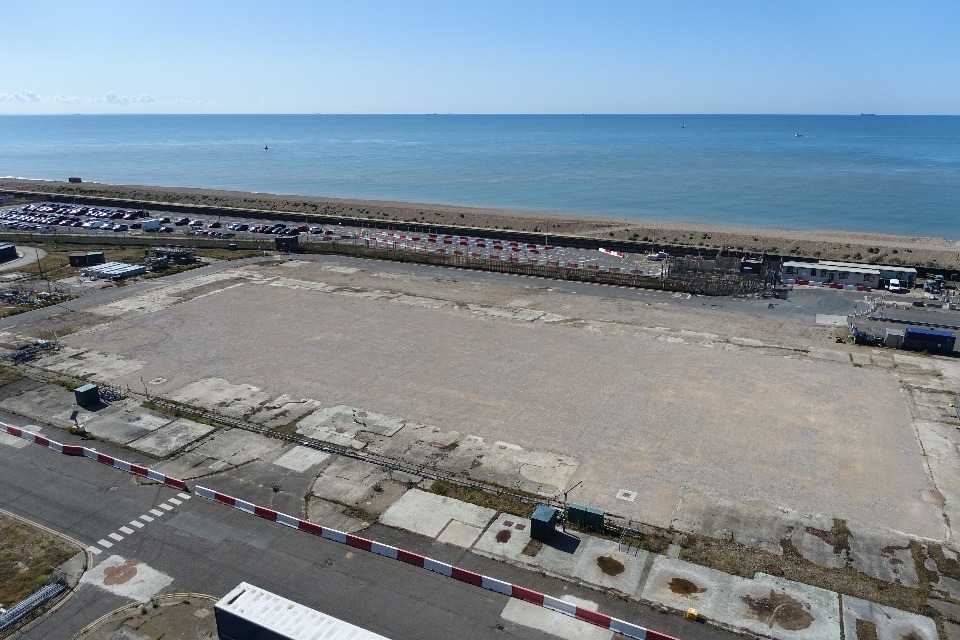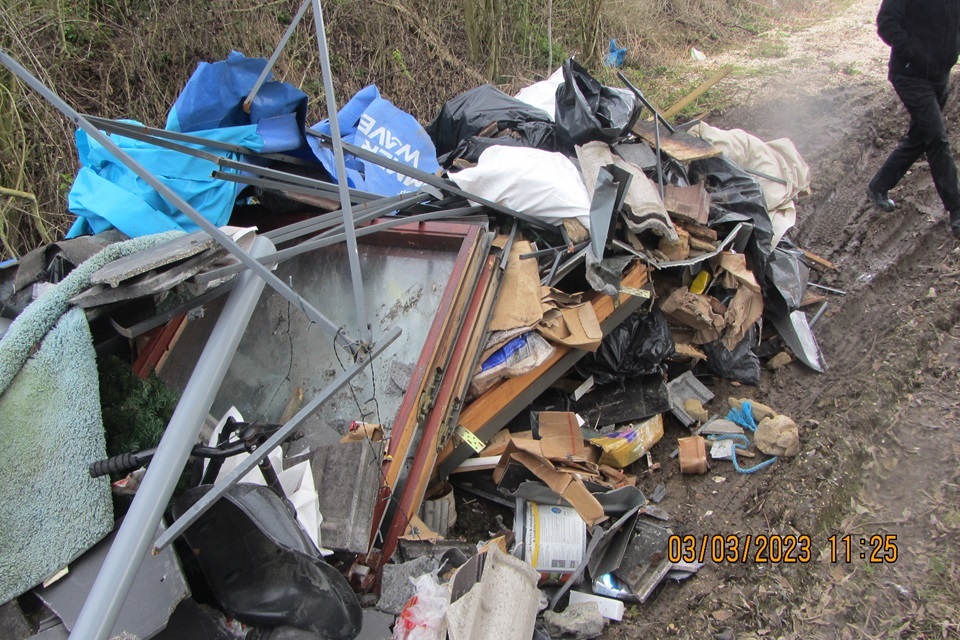Originally constructed in 1965, the turbine hall stood 26 metres above ground level and housed four turbogenerators that converted nuclear heat into electricity for the National Grid. Following demolition of the turbine hall a decade ago, a large basement void remained, which has now been safely filled.
- The basement was filled to ground level using over 10,500 cubic metres of material, enough to fill four Olympic sized swimming pools
- More than 1,400 lorry deliveries were made over 3.5 months, with materials locally sourced from Lydd Quarry.
In progress April 2025
It represents the culmination of four years of preparatory work ahead of a project which will reduce the site’s building footprint by around a third and transform the visual landscape of the area. A planning application has been submitted to remove redundant boiler units and supporting infrastructure from the site’s reactor buildings. This newly infilled area, covering more than 5,000 square metres, is expected to be a laydown area for the boilers ahead of their removal from the site.
The application, which considers potential impacts on roads, ecology and the local community, will be available for public consultation via Folkestone and Hythe District Council.

Before the project started
Dungeness A site director, Ian Cuthbert, commented “The site is well-positioned for the next phase of decommissioning, which is the removal of eight large boiler units, each weighing around 800 tonnes. This work not only represents a significant engineering accomplishment but also demonstrates our continued commitment to safety, precision, and progress.”
The turbine hall infill was led by I.D. Corcoran Building Contractors Ltd and completed ahead of schedule, thanks to close engagement between NRS and the Environment Agency.
This latest progress marks a key step forward in the long-term decommissioning of the site, ensuring the site remains safe and prepared for future phases of work.







